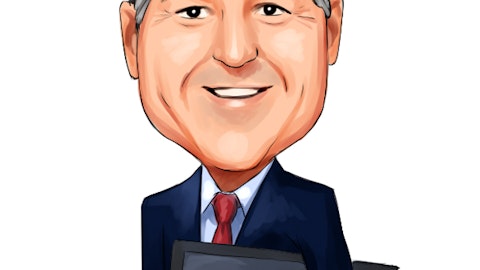
At the beginning of last week, Thompson Reuters announced that it was suspending its practice of releasing data from a closely watched consumer confidence survey to a subset of subscribers before the rest of the market had access to the information. For a mere $6,000 a month, a number of high-frequency traders had a two-second jump on the market.
How big of an advantage was this? As James Stewart of The New York Times reported, it was “arresting.” In the first 10 milliseconds of the two-second window this past Friday — that is, the first time the report was issued without a head start — only 500 shares of a leading S&P 500 (INDEXSP:.INX) exchange-traded fund changed hands. In the same 10 milliseconds last year, a staggering 200,000 shares were traded.
The “news-feed” trade
Known as the “news-feed” trade, this has been one of Wall Street’s best-kept non-secrets over the past few years. A veritable cottage industry of data aggregators and providers has sprung up. According to The Wall Street Journal, “the delivery of machine-readable news will generate $75 million in revenue for financial-news providers this year, up almost 50% in five years.”
In addition to the Thompson Reuters/University of Michigan consumer sentiment survey, there’s the Chicago Business Barometer distributed by the German financial exchange Deutsche Borse, the monthly manufacturing index supplied by the Institute of Supply Management, data about monthly shipments of appliances by the Association of Home Appliance Manufacturers, the Bedding Barometer which gauges the monthly sales of mattresses, and on and on.
All told, there are dozens of such reports that paying customers can get access to before the rest of the market. But while it seems like this burgeoning trend must be bad for individual investors who don’t have the means to compete on a level playing field, the evidence doesn’t necessarily support that assumption.
An appearance of impropriety
It’s impossible to deny that this practice appears, at least on its face, to be both unfair and bad for the markets. “It sends a really bad message to people, that markets aren’t fair, transparent,” my colleague Ilan Moscovitz observed.
“The reason America’s markets are the best and strongest markets in the world, is that individuals always believed they could get a fair trade,” New York Attorney General Eric Schneiderman told the Times‘ Stewart last week. “If you did your research well, you weren’t at a disadvantage because of information you couldn’t possibly access. It wasn’t a rigged casino.”
The practice also seems to fly in the face of the securities laws that govern the dissemination of information from publically traded corporations. The rules against insider trading are obviously paramount here. But even beyond these, there’s Regulation Fair Disclosure, which mandates that all publically traded companies must disclose material information to investors at the same time.
To be clear, the sale of information like this isn’t illegal. “The activity is widespread and legal,” Michael Rothfeld of The Wall Street Journal noted. “Federal securities law doesn’t prevent investors from trading based on nonpublic information they have legally bought from other private entities.”
In addition, viewed from the perspective of economic theory, it might very well foster inefficiency. One of the fundamental predicates of a competitive market is that there is “perfect information,” which means that all consumers and producers are assumed to have the same (and thereby simultaneous) knowledge of things like price, quality, and production methods. Clearly, this isn’t the case when a subset of market participants gets access to critical data before others.
Thinking beyond the headlines
The idea that high-frequency traders exploit their preferential access to data in order to turn a quick and often generous profit makes for salacious and clickable headlines. But whether or not the practice is actually bad for individual investors is more nuanced. If you dig a bit further into it, in fact, there’s reason to believe that all of the hoopla is much ado about nothing.
Nobody would deny the fact that economic reports such as those discussed here are important. What fewer people appreciate, however, is that it’s expensive to collect and disseminate the underlying data. “People need financial incentives to dig up information, and the marketplace benefits,” former SEC Chairman Harvey Pitt told the Times.
Richard Curtin, the economist who runs the consumer confidence survey at the University of Michigan, agreed. “Hardly anyone would pay for it if they didn’t see a profit motive,” Curtin told the Journal‘s Brody Mullins at the beginning of last month. “This research is totally funded by private sources for the benefit of scientific analysis, to assess public policy, and to advance business interests. Without a source of revenue, the project would cease to exist and the benefits would disappear.”
Beyond that, if you take a step back, you can’t help but wonder: What’s the difference between the market surging or tanking at 9:57 a.m. versus 10:00 a.m.? None, quite frankly, or at least not from the perspective of a long-term investor. “Ordinary investors aren’t betting on consumer confidence numbers within two seconds of their release,” Moscovitz said in the same conversation.
Does it erode confidence in the market?
Now, there is an argument that allowing high-frequency traders to game the system, if you will, is bad in a more general sense, by discouraging people from investing in stocks in the same way that they don’t gamble at a casino. The results of a recent Gallop poll are instructive on this point. According to its estimate, only 52% of Americans own stock outright or as part of a mutual fund or self-directed retirement account. This was the lowest level since Gallop began monitoring the metric nearly 15 years ago.
Charles Schwab, the founder and chairman of the eponymous Charles Schwab Corp (NYSE:SCHW), touched on this in a recent op-ed piece. “[L]ooking at our capital markets today, we should all be concerned. It’s becoming increasingly difficult for individual investors to compete on a level playing field. The system seems rigged against them. And they are responding by walking away.”
In response, I would say: Consider the source. Stockbrokers like Charles Schwab Corp (NYSE:SCHW), Morgan Stanley (NYSE:MS), E TRADE Financial Corporation (NASDAQ:ETFC), and to a lesser extent, Bank of America Corp (NYSE:BAC)‘s Merrill Lynch make money on trading commissions. And as day traders, their bread and butter customers, come to terms with their complete competitive disadvantage, they will presumably trade less.
Beyond this, while individual investors may be abandoning individual stock ownership, as Charles Schwab Corp (NYSE:SCHW) points out, the explanation behind the trend isn’t clear-cut. The Gallop poll cited above, and quoted by Schwab to bolster his point, concludes that it’s probably a function of Americans’ ability to buy stocks more than anything else. Meanwhile, its 2011 survey had this to say: “The financial crisis and the losses it produced for many investors have combined with government bailouts and Wall Street scandals to turn many Americans away from investing in stocks.”
Our last remaining edge on Wall Street
The point is, we really don’t know whether or not high-frequency trading is bad for the market. To cite my colleague Ilan again, “There’s a larger point about what markets have turned into, but public policy-wise, you often want to think of [high frequency trading] as an alternative to other forms of market making, not to investing.”
At the same time, we can say with greater certainty that there’s little to no harm done to long-term investors. Activity like this may even play into our favor. “I’m a long-term investor,” fellow Fool Morgan Housel recently wrote. “The fact that you and I don’t have to play these insane short-term games is the last remaining edge we have over Wall Street. And frankly, it’s enormous.”
The article Legal Insider Trading for $6,000 a Month originally appeared on Fool.com and is written by John Maxfield.
John Maxfield owns shares of Bank of America. The Motley Fool recommends Bank of America. The Motley Fool owns shares of Bank of America.
Copyright © 1995 – 2013 The Motley Fool, LLC. All rights reserved. The Motley Fool has a disclosure policy.





